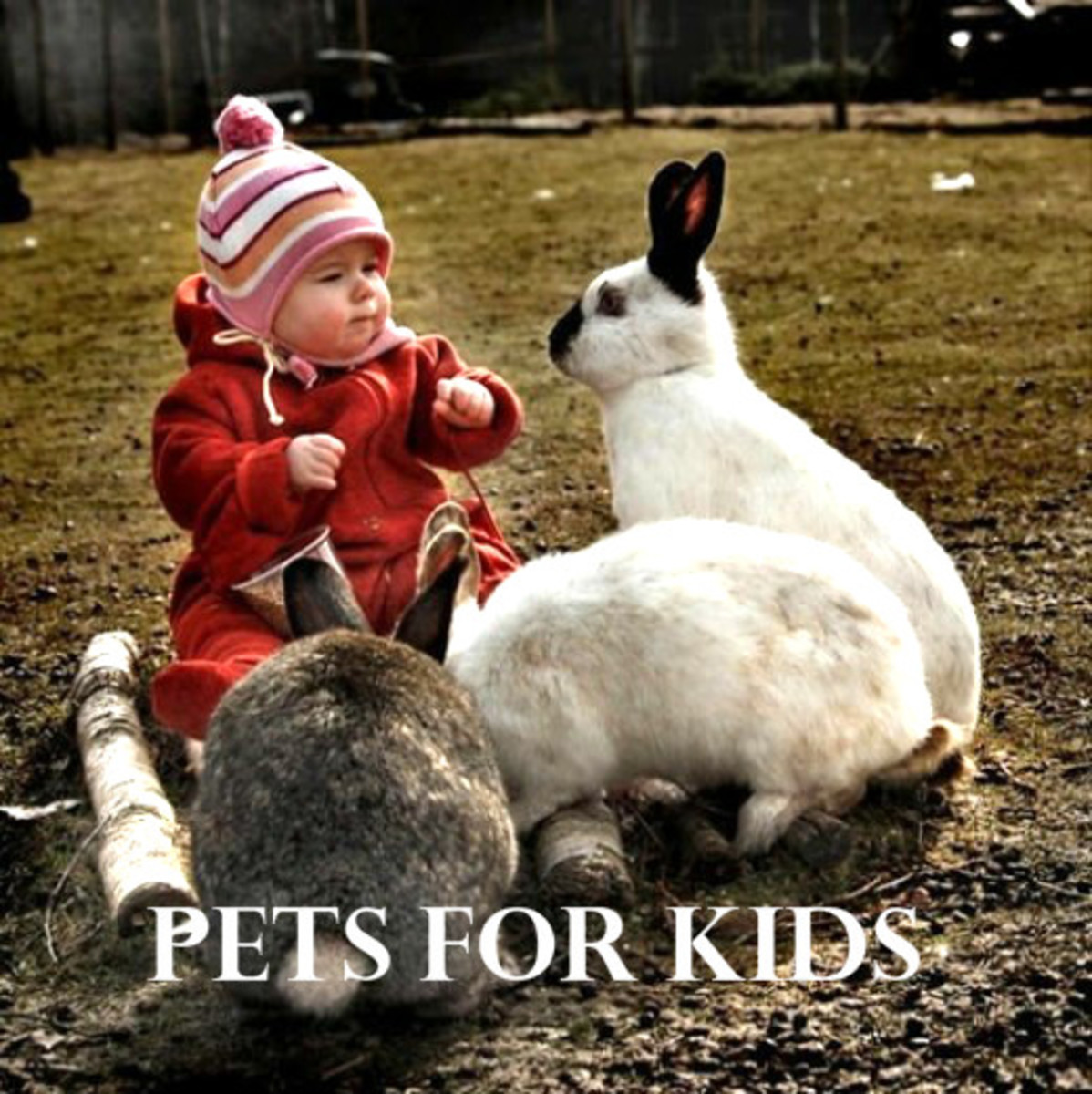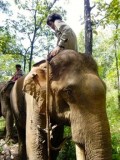How To Trap Wild Animals
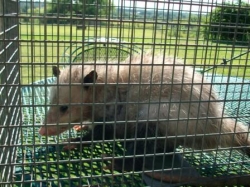
The Best Ways To Catch Wild Animals In Traps
Living in the country, there are all types of animals that invade your land. Some of these animals, like skunks and 'possums, don't do much damage. However, snakes can harm people & pets; coyotes can kill livestock, and raccoons are known to eat poultry.
There is no "animal control" in the country, but there are several ways to get rid of these wild animals. While a gun is the swiftest way, there are other options, including live traps, snares and snake catchers. I use all of these, and will show you how to use them as well!
All photos on this site were taken by the author, Country Sunshine, who retains the copyright.
Warning! If you are disturbed by this topic, please do not continue reading! You might find some of the text or photos offensive!
Trapping Regulations
Before you begin trapping, you should check with your state's Parks & Wildlife department to make certain you know the regulations in your state. In Texas, where I live, you must either have a trappers license or a hunting license if you intend to sell the skins or furs. If you are a landowner and you are trapping "nuisance animals", then you don't have to have a license. It's best to know what you are up against before starting out.
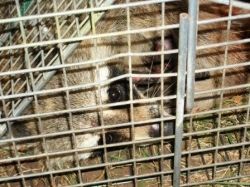
How To Set A Live Trap
Opossums, Bobcats, Skunks and Raccoons
The most humane way to catch an animal is in a live trap. These are simple cage-like boxes that the animals enter, and the door closes behind them. They come in a variety of sizes, and have a couple of different features. The smallest are for animals like rats and squirrels. In the largest, you can catch wild hogs. In between sizes are for possums, skunks, raccoons and bobcats.
Some traps have a separate compartment in the back for your bait. Others are one, long compartment. All have doors on the end furthest from the bait area.
To set your trap, you need to bait it. I usually use canned cat food or canned salmon. If neither of these are available, tuna or sardines work pretty well. Just open the can and set it as far away from the opening as possible. For the traps with the separate compartment, some people put in live roosters. I'm pretty attached to my roosters, and just can't bring myself to do that!
After you bait the trap, you will need to secure the door so that it stays open. There is a usually a hook on the top of the trap. Simply push the door open, then put the hook through the wire facing of the door. You might want to trip it a couple of times to make certain it is working.
Most of the traps have a pressure plate at the back. When the animal enters the trap to eat the bait, it will step on the plate, which shuts the front door.
Now that you have your trap set, put it along a fence or close to a chicken coop door. Make certain you check the trap regularly, as you don't want your animal to die!
Live Traps
Live traps can be purchased at a number of places, including feed stores and farm supply. If neither of these are in your vicinity, you can always purchase from Amazon.

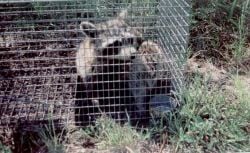
How To Remove An Animal From A Live Trap
So, you put out your trap, and now you've caught something! What do you do next? First things, first. What do you plan to do with the animal you caught?
If it is a non-threatening animal, and you don't mind having it around your house, just let it go. Or, if you live in the city, you can call Animal Control. Otherwise, you might need to haul it off somewhere else, or dispose of it in some other way.
Also, it depends on what animal you caught!
1) Rats, Squirrels and House Cats: Just open the front door, and let them go. They'll usually move to the back of the cage until you get the door open.
2) Raccoons and Bobcats: Although 'coons and bobcats have sweet faces, they can be really mean. The one you caught is probably pretty angry with you, and will growl and attack the sides of the cage. The best thing to do is get a pole with a hook on the end. Stand at the back of the cage, then hook the front door with your pole. It takes a bit of practice to get the door open without getting bitten. You might want to try this out before you catch anything! The 'coon or bobcat will run out immediately.
3) Skunks: This can be pretty tricky, because you certainly don't want to get sprayed by a skunk! The best thing to do is sneak up on it, and throw an old blanket on top of the cage. Haul the cage off somewhere really far away, then use your pole to get the door open. If it doesn't run out immediately, pull off the blanket, and get back quite a distance. It will eventually leave.
4) Wild Hogs. Most of you will never catch a wild hog, unless you live in the country. If you do happen to catch one or a dozen, it's best to call one of the local hog buyers. These people will come out to your trap and load the hogs into a trailer. If you don't have a hog buyer, you will probably have to shoot them. Wild hogs are very dangerous, and will lunge at the sides of the trap.
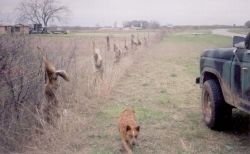
Catching Wild Animals With A Snare
A snare is simply a piece of wire made into a noose. Catching an animal in a snare will most likely kill them. Only do this is you are having a real problem with animals such as bobcats and coyotes. If you have pets or livestock that roam freely, make certain they do not have access to the area where the snare is located. There is nothing worse than finding your dog stuck in a snare!
My husband was a trapper, and he caught many a coyote and bobcat in snares. He taught me how to make them, and I now follow in his footsteps. My latest claim to fame is catching a wild hog in a snare. Practically unheard of!
To set a snare, you first need to decide where to put it. The best way to do this is to look for animal trails. Walk along a fence line, and look for holes dug under the fence. This is where your animal is going through the fence.
Once you decide where to put the snare, secure the loose end to a post or the barbed wire fence. Suspend the loop, or "noose", in the area right in the middle of the trail. You might need to hold it still with a small stick, but do not secure too tightly! When the animal runs through the loop, he will be stopped short because the snare is secured to the post.
It takes a bit of practice to learn how to hang the snare, and keep it in the middle of the trail. Make certain you check your snare at least once a day, and re-set as needed.
Where To Buy Snares
Although I make my own snares, it's best to buy them if you are unfamiliar with them. There are companies that make complete snares, as well as sell the materials to make them.
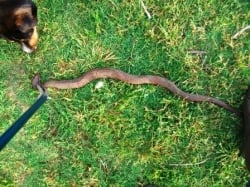
Snake Catchers and Tongs
I happen to be a big fan of snakes, and really love catching them! My dad used to participate in the rattlesnake roundups, so I must take after him. One of the evening "sports" around here is to go road hunting for snakes. Just drive around in the early evening, looking for snakes on the road. But I digress...
Out here in the country, there seem to be snakes everywhere! Copperheads in the wood piles; rattlesnakes in the yard, and chicken snakes in the coops. Coach whips zipping across the roads, and water moccasins in the stock tanks. I have several hoes standing in strategic locations, because I never know when a snake might appear!
The best way to catch a snake, other than shooting it, is to get it with a snake catcher or snake "tongs". These are long poles with a claw, or "jaw" on the end. Just reach down with your pole, clamp the claw right behind the snake's head, and you've got it!
When I catch a nice rattlesnake or copperhead, I throw it into a pillowcase, then into the deep freeze. That way, I can have a snake skinning party at a later date! It is up to you to decide what you want to do with yours. Either let it go somewhere far away, or find another way to dispose of it.
Rattlesnake - From the Deep Freeze To the Wall

Where to Purchase Snake Catchers & Tongs
It's difficult to find snake catchers and/or tongs at your local store. Some feed stores may carry them, in addition to farm suppliers. I've bought all of mine online.

Other Types of Traps
There are a number of other traps in which you can catch wild animals. These traps will injure or kill the animals, and I do not use nor recommend them unless absolutely necessary. These include conibears, coil spring traps, and coon cuffs. Conibears are extremely dangerous, and shouldn't be used by a novice. If you were to catch an arm or leg in one, you'd probably die before you were rescued. For more information on these, check out the links below:
- R.P. Outdoors
Traps and snare supplies. I regularly purchase snare parts from this company. - The Snare Shop
Trapping & snaring supplies. I have purchased animal calls from them, in addition to snare parts. - Fleming Outdoors
Wide variety of leg and body traps, plus live traps and snare supplies
What NOT To Do With A Conibear Trap!
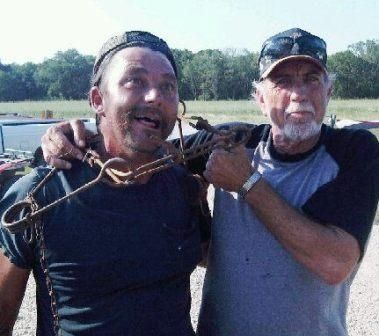
A sensitive subject to some, but a necessary topic for us in the country. Would you trap a wild animal if it was causing harm to your pets or livestock? Please let me know your thoughts!
© 2012 Country Sunshine

